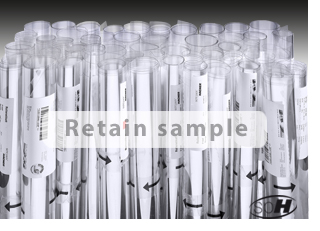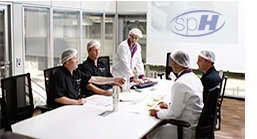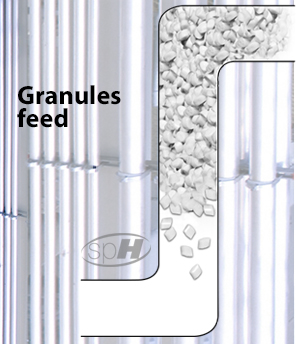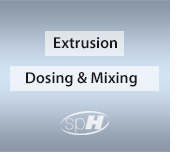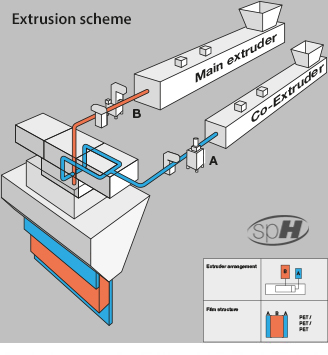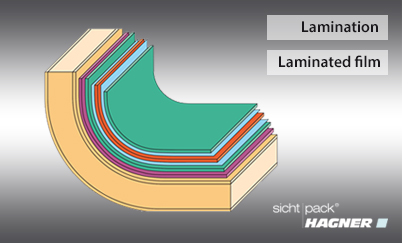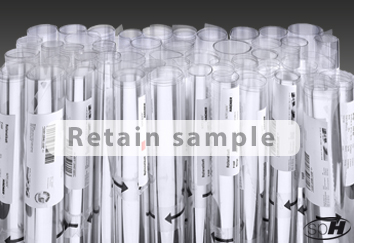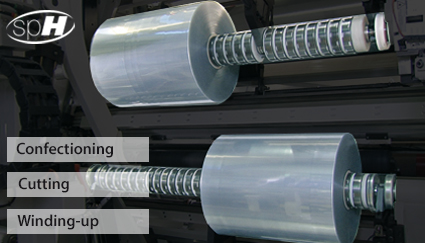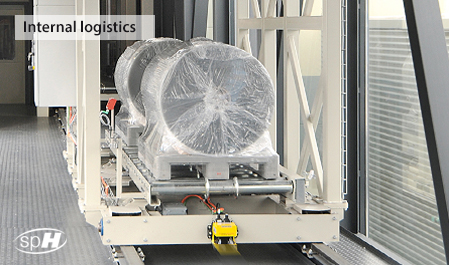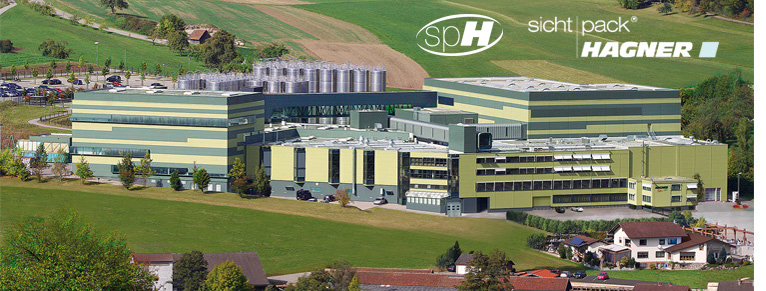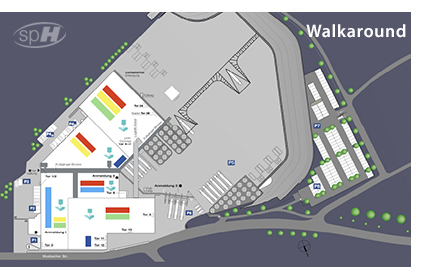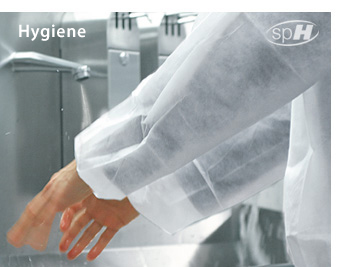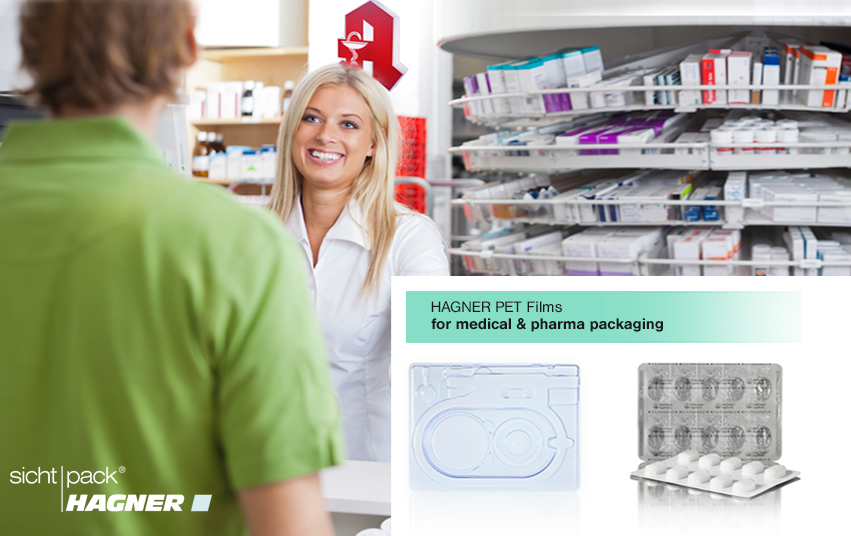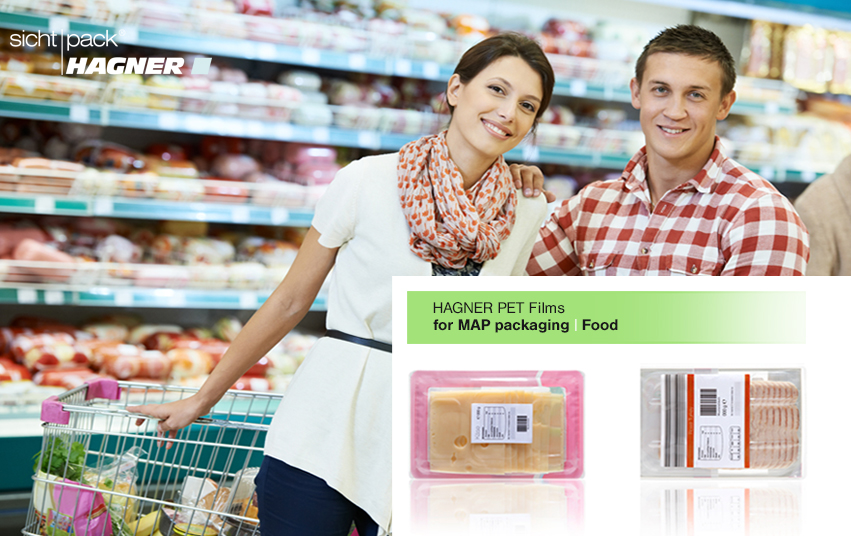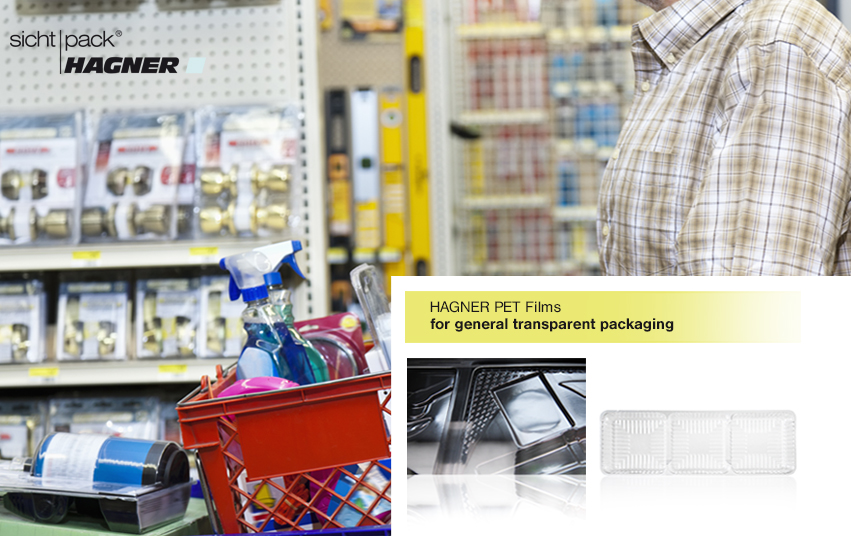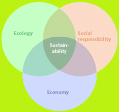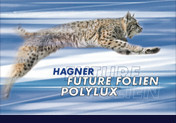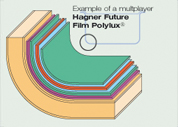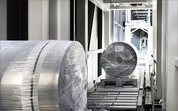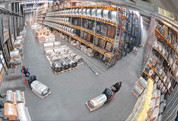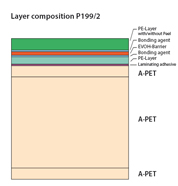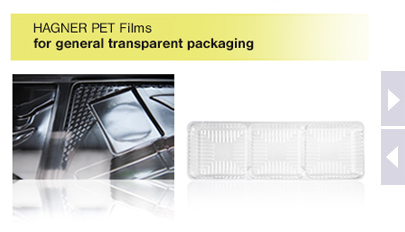
Polyethylene terephthalate (short symbol PET) is a thermoplastic material which is produced by means of polycondensation and belongs to the family of polyesters. Natural polyesters have been known since 1830. The first synthetic polyester, glycerine phtalate, was used in the first world war as an impregnating agent.
PET today has manifold application fields and is used among other things for manufacturing plastic bottles (PET bottles), films and textile fibres. The worldwide production amounts to 40 million tons per year. PET is preferentially used in the food industry, too. PET has the recycling code 01.
PET is polar, by this means there are generated strong intramolecular forces. The molecule is in addition structured as a linear molecule without any cross linkings. Either property is a precondition for semi-crystalline areas and fibres. By reason of these areas, an elevated fracture strength and a dimensional stability are obtained at a temperature higher than 80° C. The impact resistance is, however, inferior, the gliding and wearing behaviour is good.
PET today has manifold application fields and is used among other things for manufacturing plastic bottles (PET bottles), films and textile fibres. The worldwide production amounts to 40 million tons per year. PET is preferentially used in the food industry, too. PET has the recycling code 01.
PET is polar, by this means there are generated strong intramolecular forces. The molecule is in addition structured as a linear molecule without any cross linkings. Either property is a precondition for semi-crystalline areas and fibres. By reason of these areas, an elevated fracture strength and a dimensional stability are obtained at a temperature higher than 80° C. The impact resistance is, however, inferior, the gliding and wearing behaviour is good.
The glass transition temperature is approximately 80° C. PET passes on to the crystalline state (C-PET) at about 140° C. The elementary cell is triclinic {a = 4,56 nm, b = 5,94 nm, c = 10,75 nm, α = 98,5°, β = 118°, γ = 112°}. The density of amorphous PET (A-PET) amounts to 1,33–1,35 g/cm³ and that of semi-crystalline C-PET to 1,38–1,40 g/cm3. In comparison to C-PET, A-PET possesses a fairly inferior stiffness and rigidity, but a higher impact resistance. The density of the crystalline areas depends upon the duration and the temperature of the solid-state polycondensation which is carried through in order to obtain higher-molecular PET qualities by default. The crystallization degree hardly exceeds 70 %. The melting temperature is between 235 and 260 ° C (dependant on the crystallization degree and on the polymerization degree.
The manufacturing of PET is predominantly based on mineral oil, but also on petroleum gas. The monomers out of which PET is produced are terephtalic acid (1,4-benzene-di-carboxylic acid) and ethylene glycol (1,2-di-hydro-ethane, ethane-1,2-di-ol). The large-scale manufacturing is partially still performed through transesterification of dimethyl terephthalate with ethanediol. Since this is a equilibrium reaction, an excess of ethanediol is used which is again distilled off by the reaction guidance in order to influence the equilibrium in a favourable way. The melt-phase polycondensation does not result in sufficiently high molar masses (within technically reasonable periods). Therefore, PET qualities for bottles and industrial yarn (e.g. Diolen, Trevira) are further condensed (SSP – solid-state polycondensation). Ring-opening reactions out of oligomers are likewise possible by producing precipitate and quickly enabling high molar masses of more than 100,000 g/mol to be achieved. These procedures are, however, still being developed. In recent procedures, ethanediol is directly esterificated with terephtalic acid.
When being processed, PET is preferred in semi-crystalline shape, but it, however, crystallises spontaneously only very slowly for which reason a nucleation agent has to be added in order to obtain a quick crystallization.
https://en.wikipedia.org/wiki/Polyester https://en.wikipedia.org/wiki/Polyethylene_terephthalate
Unprecedentedly, PET has been established among the polymers as globally used plastic material having a high potential of development up to bio-PET on the basis of renewable raw materials. Following the environmental idea, PET has replaced PVC in many fields.

The manufacturing of PET is predominantly based on mineral oil, but also on petroleum gas. The monomers out of which PET is produced are terephtalic acid (1,4-benzene-di-carboxylic acid) and ethylene glycol (1,2-di-hydro-ethane, ethane-1,2-di-ol). The large-scale manufacturing is partially still performed through transesterification of dimethyl terephthalate with ethanediol. Since this is a equilibrium reaction, an excess of ethanediol is used which is again distilled off by the reaction guidance in order to influence the equilibrium in a favourable way. The melt-phase polycondensation does not result in sufficiently high molar masses (within technically reasonable periods). Therefore, PET qualities for bottles and industrial yarn (e.g. Diolen, Trevira) are further condensed (SSP – solid-state polycondensation). Ring-opening reactions out of oligomers are likewise possible by producing precipitate and quickly enabling high molar masses of more than 100,000 g/mol to be achieved. These procedures are, however, still being developed. In recent procedures, ethanediol is directly esterificated with terephtalic acid.
When being processed, PET is preferred in semi-crystalline shape, but it, however, crystallises spontaneously only very slowly for which reason a nucleation agent has to be added in order to obtain a quick crystallization.
https://en.wikipedia.org/wiki/Polyester https://en.wikipedia.org/wiki/Polyethylene_terephthalate
Unprecedentedly, PET has been established among the polymers as globally used plastic material having a high potential of development up to bio-PET on the basis of renewable raw materials. Following the environmental idea, PET has replaced PVC in many fields.





In the development phase, we readily give you advice on finding the required specification which we will be glad to optimise by means of samples.
On request, we carry through product training courses for your staff.
An important element of our enterprise policy is to inform our customers regularly on current and important topics in the markets.
On request, we carry through product training courses for your staff.
An important element of our enterprise policy is to inform our customers regularly on current and important topics in the markets.
 English
English Deutsch
Deutsch Français
Français








